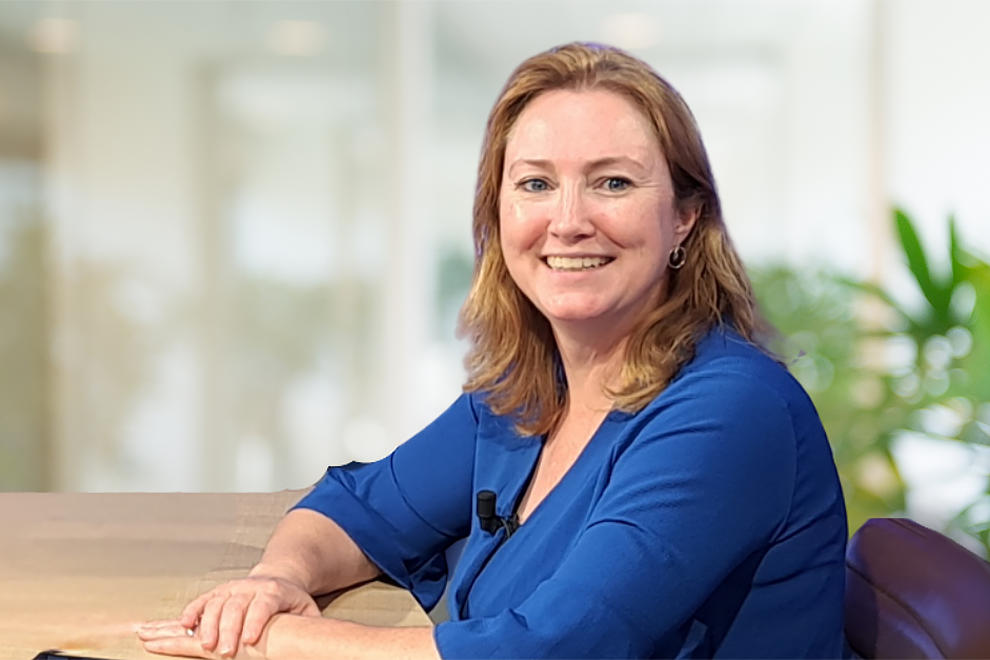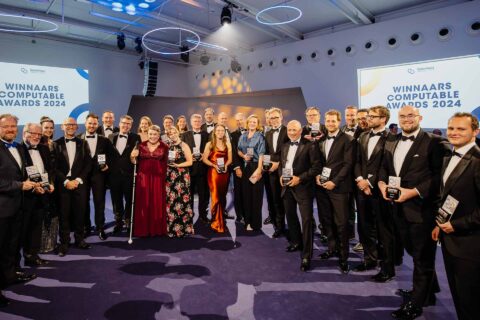In a rapidly digitizing healthcare, the smartphone is evolving into an indispensable thousand-things-can-do device. "Whether it's alarming or accessing the ECD, the smartphone is increasingly becoming the digital workplace with which the caregiver does everything," states business development manager Evelien van Boxtel of system integrator CuraTec.
This ubiquity makes the smartphone a tangible symbol of a development that is largely hidden from view. It is precisely at the back end of the care process that more and more digital lines need to be interconnected to create an integrated workplace. Sensor technology, alarm systems, mobile telephony and the electronic client file to name but a few important building blocks must fit together seamlessly.
Directed
And that is much more than a technical exercise, Van Boxtel emphasizes. As a system integrator in elderly, disabled and youth care, CuraTec is naturally at home in the field of mobile telephony, networks, cloud technology and home automation. But service providers must also know the care process, Van Boxtel believes. And care providers, conversely, must take more control of the technology.
Integration
"When we started doing systems integration in healthcare 15 years ago, we often had to explain exactly what we were doing," says Van Boxtel. "Especially in the field of healthcare home automation, integration was not well known. Everything came from one manufacturer's product line. But if you want to have a good healthcare system, you can't separate telephony, networking and home automation."
Far-flung
Now that digital technology has penetrated deep into the primary process, professionals can no longer avoid the subject, Van Boxtel believes. "Technology was a far cry for the employee. Someone from the technical department had to take care of it. Now, as a care provider, you can turn digital functions and applications on and off yourself. That means you have to think about how technology can make your work better. As an employee, you have to take more control of how the system works to you."
Training
As far as Van Boxtel is concerned, the care provider does not have to do this alone. CuraTec sees training and guidance explicitly as part of the total range of services. Van Boxtel: "Otherwise you build something beautiful that people no longer dare to touch."
Staff tightening
As to why a digital workplace is needed, Van Boxtel does not have to think long. "Healthcare has huge staff shortages. In the average work process in elder care, you can still make significant gains with technology. Moreover, you also see this shortage of personnel at the bedside in all kinds of other areas. ICT is increasingly being done away with, because the people are not there for it. Technical services are being stripped out. All those functions are disappearing to a greater or lesser extent."
Motion Detector
For digital technology to deliver on its promise, a critical evaluation of work processes is inevitable, Van Boxtel believes. As an example, she cites the widely used motion detector. It can automatically alert professionals if a resident gets out of bed. "But why do you want to know if someone is out of bed? Actually, you want to know if things are going well. Not whether someone is out of bed. If someone can get back into bed on their own, a caregiver doesn't have to go look either. That saves time and you don't have to invade privacy. In the end, you don't want to know if someone is out of bed, but if someone is back after ten minutes or 15 minutes."
Smart sensors
Smart sensors can help with this. For example, there are camera solutions that can use artificial intelligence to recognize where a bed is or a door is. They can also distinguish between employees and residents. Useful, because only in the second case does the system have to send out an alarm.
Linking with ECD
Van Boxtel sees such systems integrating more and more. "The next step is to link certain info from your care system back to the ECD. If someone has been out of bed seven times in one night you want to see that reported back in the ECD, because maybe there is a bladder infection."
Digital workplace
Linking to the ECD is becoming increasingly important for another reason as well. "Care workers who have worked at the same location for ten years and know all the residents are seeing less and less. So employees want to be able to quickly call up information about medication use, whether or not to resuscitate, or behavioral problems in case of an alarm. So for that, we need to move even more to that digital workplace."
Watching
To understand what motivates caregivers, CuraTec explicitly looks over the caregiver's shoulder. "We walk along for several days, often also on the evening shift. During the day there are more colleagues and the residents are in the living room. Especially when everyone goes to bed and you are with one or two people in a group, you have to be able to rely on the technology. Moreover, what you agree in advance does not always turn out to fit. You only find that out by walking along."
In addition to the professional's experience, CuraTec also values the judgment of family, loved ones, caregivers and, if possible, clients. "On the spectrum of freedom versus safety, the family is often more on the side of freedom. Employees are not infrequently terrified when a closed ward opens thanks to digital tools. Because if people start walking, that's their responsibility."
Privacy
Van Boxtel's explanation makes it clear that the use of digital technology raises fundamental questions. In addition to the question of freedom and coercion, the issue of privacy quickly arouses strong emotions. A provider like CuraTec obviously has rules to follow, Van Boxtel explains. That includes data processing agreements and data impact analyses.
She finds further discussion at times overshooting the mark. "If you say you're going to put a smart camera over someone's bed, everyone is shocked at first. Employees used to throw open a room door three times a night during their rounds. We thought that was normal. But when it comes to a camera. we get stressed out. But I have found that a lot is possible, as long as you explain it well in advance."
AI
Of course, with the advance of AI, a new element does present itself in the privacy discussion. It is no longer just about registering privacy-sensitive information, but also about storing, preserving and processing it. For now, according to Van Boxtel, this happens sporadically in CuraTec's field of activity. "Storing we actually do very little. With such a camera solution, the image is nowhere to be found after a report. And if it does happen, it is for a reason. For example, to look at a resident's sleeping behavior. Then it becomes a measure that must be neatly agreed upon and recorded in file."
Making innovation manageable
In addition to legal hurdles, digital healthcare has traditionally faced technological hurdles. Limited interoperability is perhaps the most important of these. As far as Van Boxtel is concerned, brand-independent software platforms are increasingly able to respond to this. If she has to point to a problem, it is the constant stream of new applications. Customers are in danger of losing sight of the forest for the trees."
"There are so many beautiful, smart sensors coming on the market. So many specific products, all with their own app. If you're not careful, the healthcare worker will soon have fifteen or twenty apps of all kinds of products. That's why we develop a menu with customers. Starting from the functional question, we look at what they actually want to know about which target group, and then we look for the most suitable applications to go with it. O
"To see if adjustment of the menu is necessary, we do a technology refresh with the customer once a year. Otherwise you start chasing everything that comes along and bringing things in that are not manageable. You have to stay away from that, but you also don't want to get in the way of innovation."
Evelien van Boxtel spoke as a key note at the Future Proof ICT Summit 2023 on Nov. 15.












